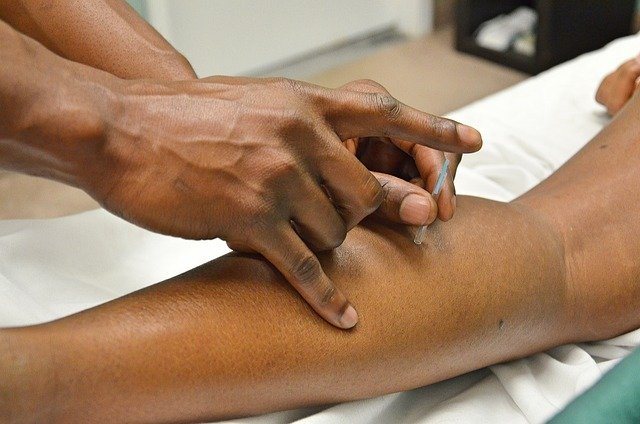Comprehensive Guide to Tummy Tuck Surgery: Options and Expectations
Tummy tuck surgery, medically known as abdominoplasty, is one of the most sought-after cosmetic procedures for individuals looking to achieve a flatter, firmer abdominal profile. This surgical intervention removes excess skin and fat while tightening weakened or separated muscles, creating an abdominal profile that is smoother and more toned. Unlike non-surgical alternatives, a tummy tuck offers dramatic, long-lasting results for those struggling with stubborn belly fat, loose skin, or muscle laxity that doesn't respond to diet and exercise.

Understanding Tummy Tuck Surgery Options
Tummy tuck surgery isn’t one-size-fits-all. Several variations exist to address different patient needs. A full abdominoplasty involves an incision across the lower abdomen from hip to hip, allowing surgeons to remove significant excess skin and repair abdominal muscles. Mini-tummy tucks use smaller incisions and focus on the lower abdomen only, ideal for patients with concerns primarily below the navel. Extended tummy tucks address excess skin on the flanks and lower back in addition to the abdomen. For patients with significant skin laxity following major weight loss, a circumferential abdominoplasty (belt lipectomy) might be recommended, which removes excess skin around the entire midsection.
Clinics Offering Belly Fat Removal Treatments
When seeking facilities for tummy tuck surgery, accreditation and specialization should be primary considerations. Leading clinics typically offer comprehensive consultations where board-certified plastic surgeons evaluate your specific needs and discuss realistic outcomes. Many establishments now provide virtual consultations as a preliminary step, allowing potential patients to discuss their goals before committing to in-person appointments. Superior clinics also feature before-and-after galleries of actual patients, state-of-the-art surgical facilities, and dedicated recovery support. While researching options, look for facilities with specific expertise in body contouring procedures and positive patient testimonials regarding both results and care experience.
Belly Fat Reduction with Diet and Medical Support
Before pursuing surgical intervention, many medical professionals recommend exploring non-surgical approaches to belly fat reduction. A comprehensive approach typically begins with dietary modifications focused on reducing processed foods, refined carbohydrates, and sugar while increasing protein intake and fiber-rich vegetables. Medical supervision can enhance these efforts through structured weight management programs, nutritional counseling, and metabolic assessment. Some clinics offer medically supervised programs combining customized meal plans with prescription medications that may help control appetite or fat absorption. For patients with hormonal imbalances contributing to abdominal fat accumulation, endocrine evaluation and treatment might be recommended as a complementary approach.
Overview of Tummy Fat Reduction Treatments
Beyond traditional tummy tuck surgery, numerous other medical interventions target abdominal fat. Liposuction remains popular for removing localized fat deposits but doesn’t address skin laxity or muscle separation. Newer technologies include laser-assisted liposuction, which may provide some minimal skin tightening effects alongside fat removal. Non-surgical options have also expanded significantly, including cryolipolysis (fat freezing), radiofrequency treatments, ultrasound fat reduction, and injectable fat dissolvers. These non-surgical alternatives typically require multiple sessions and produce more modest results compared to surgical approaches. They may be appropriate for patients with good skin elasticity and smaller amounts of excess fat who wish to avoid surgical recovery.
Cosmetic Surgery Options for Belly Fat Removal
Abdominoplasty represents just one of several surgical approaches to belly fat concerns. Body lift procedures combine tummy tucks with lateral thigh and buttock lifting for patients with circumferential excess tissue. Lipoabdominoplasty combines traditional tummy tuck techniques with extensive liposuction for enhanced contouring. For patients with diastasis recti (separation of abdominal muscles often following pregnancy), endoscopic abdominoplasty focuses primarily on muscle repair with minimal skin removal. Post-bariatric body contouring addresses the unique challenges of patients with significant weight loss, often requiring staged procedures to comprehensively address excess skin throughout the torso. Each option carries different recovery timelines, scarring patterns, and potential results.
Cost Considerations for Tummy Tuck Procedures
The financial investment for tummy tuck surgery varies significantly based on procedure complexity, geographical location, surgeon expertise, and facility fees. Full abdominoplasty typically ranges from $6,000 to $12,000, while mini-tummy tucks may cost between $4,000 and $8,000. Extended procedures or those combined with additional surgeries can exceed $15,000.
| Procedure Type | Average Cost Range | What’s Typically Included |
|---|---|---|
| Mini Tummy Tuck | $4,000-$8,000 | Limited skin/fat removal below navel, minimal muscle repair |
| Full Tummy Tuck | $6,000-$12,000 | Complete abdominal contouring, muscle repair, navel repositioning |
| Extended Tummy Tuck | $8,000-$15,000+ | Full abdominoplasty plus flanks/back treatment |
| Lipoabdominoplasty | $8,000-$14,000 | Combined tummy tuck with extensive liposuction |
| Post-Bariatric Body Lift | $10,000-$20,000+ | Circumferential removal of excess skin |
Prices, rates, or cost estimates mentioned in this article are based on the latest available information but may change over time. Independent research is advised before making financial decisions.
Most insurance plans classify tummy tucks as cosmetic procedures and don’t provide coverage unless medically necessary due to functional impairment. Many clinics offer financing options, including medical credit cards or payment plans to help manage these expenses.
Recovery Expectations Following Tummy Tuck Surgery
Recovery from abdominoplasty requires significant downtime. Most patients need one to two weeks before returning to sedentary work and four to six weeks before resuming normal activities. During early recovery, drainage tubes are often placed to prevent fluid accumulation, and compression garments must be worn continuously to reduce swelling and support healing tissues. Pain management typically involves prescription medication for the first week, transitioning to over-the-counter options. Final results emerge gradually as swelling subsides over three to six months. The surgical scars, while permanent, are strategically placed low on the abdomen to be concealed by underwear or swimwear, and typically fade considerably over the first year.
This article is for informational purposes only and should not be considered medical advice. Please consult a qualified healthcare professional for personalized guidance and treatment.




